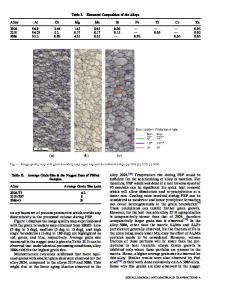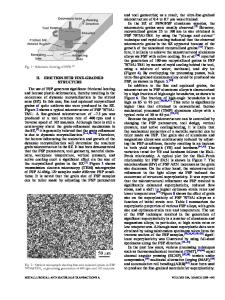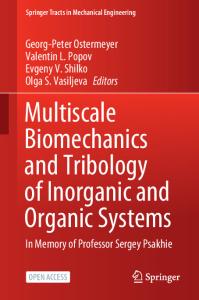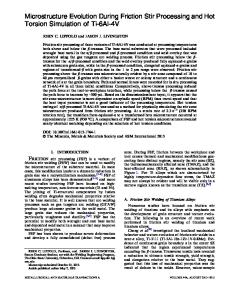Control of Reaction Kinetics During Friction Stir Processing
- PDF / 715,724 Bytes
- 5 Pages / 593.972 x 792 pts Page_size
- 100 Downloads / 338 Views
Friction stir welding (FSW), a thermomechanical processing technique, was invented by The Welding Institute in 1991.[1] It was developed as a solid-state technique and was first applied to Al alloys. Since it is a solid-state technique, the shortcomings associated with the melting of metals are overcome with this process. Defects like porosity and poor solidification microstructure, which are seen with fusion welding, are not observed in FSW. The technique is conceptually simple and involves a rotating tool, which is inserted into metal sheets to be joined. Frictional heat softens the material, and the tool traverse moves material from the front of the tool and deposits it at the back. The combined action of the material flow and high temperature enables the joining of the metal sheets.[2] Mishra et al.[3] introduced a modification to FSW called friction stir processing (FSP). This process is similar to FSW, but
SHAMIPARNA DAS, NELSON Y. MARTINEZ, and RAJIV S. MISHRA are with the Department of Materials Science and Engineering, University of North Texas, Denton, TX 76203, USA. Contact e-mail: [email protected] GLENN J. GRANT is with the Energy and Environment Directorate, Pacific Northwest National Laboratory, Richland, WA 99352. SAUMYADEEP JANA is with the Applied Materials and Performance, Pacific Northwest National Laboratory, Richland, WA 99352. Manuscript submitted June 10, 2016. METALLURGICAL AND MATERIALS TRANSACTIONS A
here the tool is inserted into a bulk metal piece to bring about local microstructural modification to enhance a specific property. Extensive studies have already been performed to modify the microstructure through FSP. Microstructures show a more homogenized, pore-free, and refined microstructure,[4] improved microhardness and improved tensile strength in Inconel,[5] change in texture and Hall–Petch slope in Mg,[6,7] high-strain-rate superplasticity,[8] and improved fatigue life in Al.[9] Mishra et al.[10] used FSP as a novel technique to fabricate a surface composite with SiC reinforcements in Al matrix. The reinforcements exhibited uniform distribution and good bonding with the matrix. This technique marked the beginning of the fabrication of local embedded composites through FSP with reinforcements like SiC, Al2O3 for improved hardness and stiffness,[11,12] and Ni particles in Al for improved ductility.[13] Next, multi-walled carbon nanotubes,[14,15] fullerene[16] was embedded into Al and Mg matrix to improve mechanical properties. Nano-sized Al2O3 and SiO2 were dispersed to form nanocomposites and improve strength by the presence of tensile residual stress.[17–19] Although a wide variety of composites were fabricated, the processing route involved the addition of reinforcements externally, and FSP established their homogeneous mixing in the matrix. Hence, the processing route was taken another step forward by fabricating in situ metal matrix composites through FSP. Ke et al.[13] used Al plate and pure Ni powder as raw materials and formed a new phase of Al3Ni during FSP. Lee et al.[20] fabric
Data Loading...











